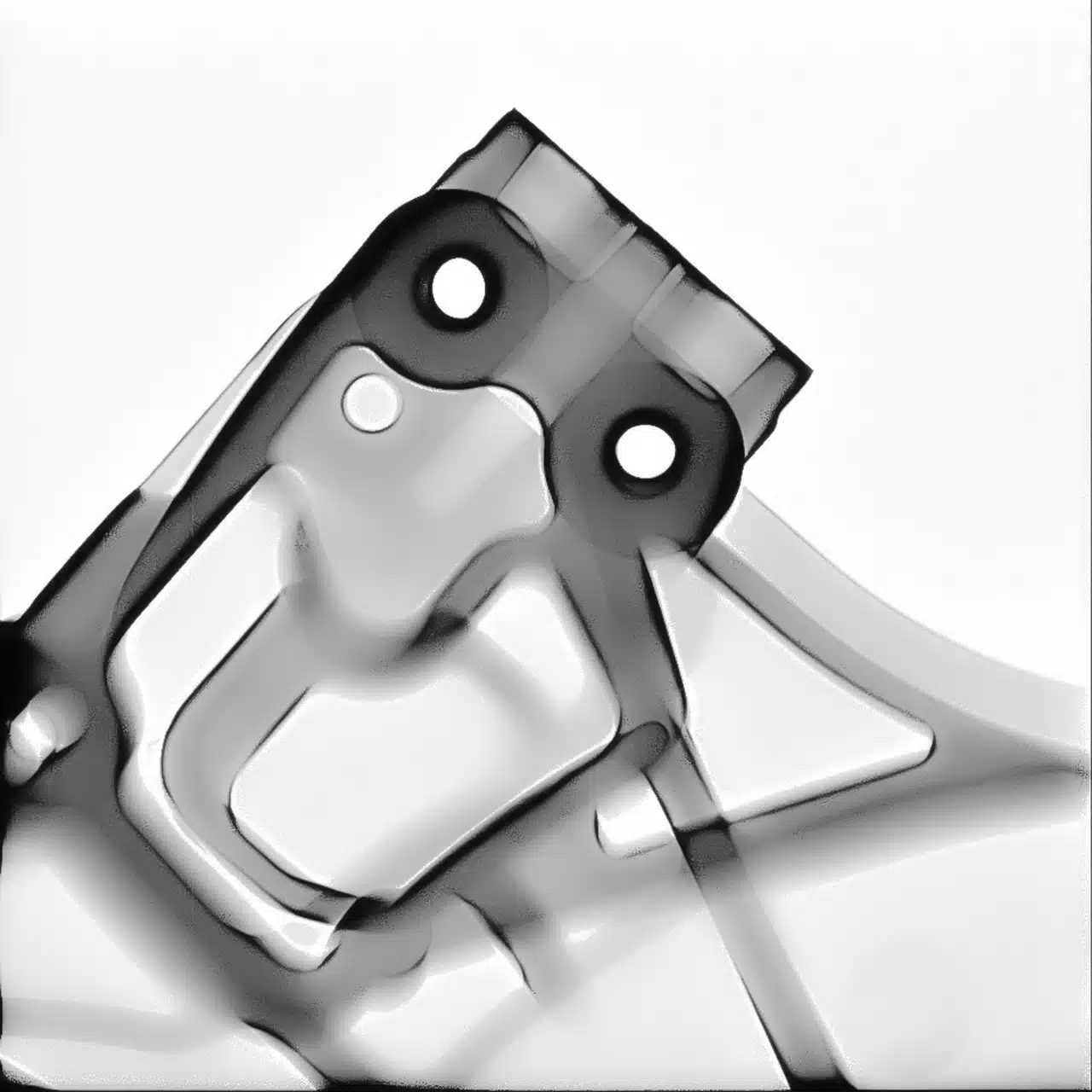X-ray Technology in Die Casting
The High Pressure Die Casting (HPDC) process can be fraught with challenges, such as porosity issues and incomplete filling of mold cavities. These can compromise the integrity and performance of the final product, making quality control a top priority for us here in the foundry at CastAlum.
By using high-resolution X-ray imaging, we can quickly and efficiently identify and rectify defects and inconsistencies in our aluminium castings. This assessment can be done in real-time as parts are being made, which streamlines our production process while improving the overall quality of our products.
Casting Light on the X-ray
The type of defects we are looking for when we X-ray our castings include:
- Porosity (voids within the casting material)
- Inclusions (foreign particles or contaminants in the casting)
- Cracks (fractures or breaks in the structure)
- Shrinkage (uneven or insufficient material contraction during solidification)
These issues can cause product failure and be responsible for reduced performance. By being aware and looking out for these flaws early on, we can ensure that the products we deliver to our customers are of a consistently high quality. Plus, this proactive approach to quality control reduces our scrap rates, making our operation more energy and resource efficient.
Compliance with industry standards and regulations is essential in the die casting world, and X-ray technology has proven invaluable in helping us to adhere to international guidelines. Maintaining quality benchmarks is a key component of the company’s commitment to delivering exceptional products, and X-ray inspection ensures that each casting meets or exceeds these high standards.

A die casting operator checking a part for quality using an X-ray machine
Advancing X-ray technology
We also already have experience with automatic x-ray analysis. One of the first components we manufactured on our squeeze casting resource were steering and suspension knuckles for high-performance vehicles. Traditionally these parts were cast or forged in iron or steel, for the strength and durability that is required. However, our squeeze casting process combined with an automated X-ray analysis solution meant that we were able to meet all of the demanding property requirements for these components, while maintaining the design flexibility and light-weighting benefits of an aluminium casting.
Recently, we have upgraded the first of our MU2000n X-ray units from an image intensifier imaging system to a Varex XRD 14 bit digital panel. This has resulted in superior X-ray images on the castings, which in turn enables us to update our casting processes further to enhance product quality. In May we will be making a further investment and upgrading our second MU2000 to the digital panel system.
As advancements continue to be made in X-ray imaging, there is much potential to further enhance the efficiency and effectiveness of defect detection. By integrating artificial intelligence (AI) and machine learning technology into the analysis process, patterns that may indicated defects can be identified and the overall inspection accuracy can be improved.
We are continuing to raise the bar for excellence in aluminium castings. Our implementation of X-ray technology remains a critical component of our drive for continuous quality assurance in the world of die casting.
Follow Us Online
Remember to follow us on LinkedIn to learn more about our technological expertise and engineering solutions!
You can also sign up to our monthly newsletter: ‘The CastAlum Compendium‘ to receive our updates regularly.

A die cast part being checked by an x-ray machine
Get in touch to find out more about our die casting and machining services!
Got questions about our services or would like us to quote?
Simply fill out the form below and a member of our team will be in touch!

